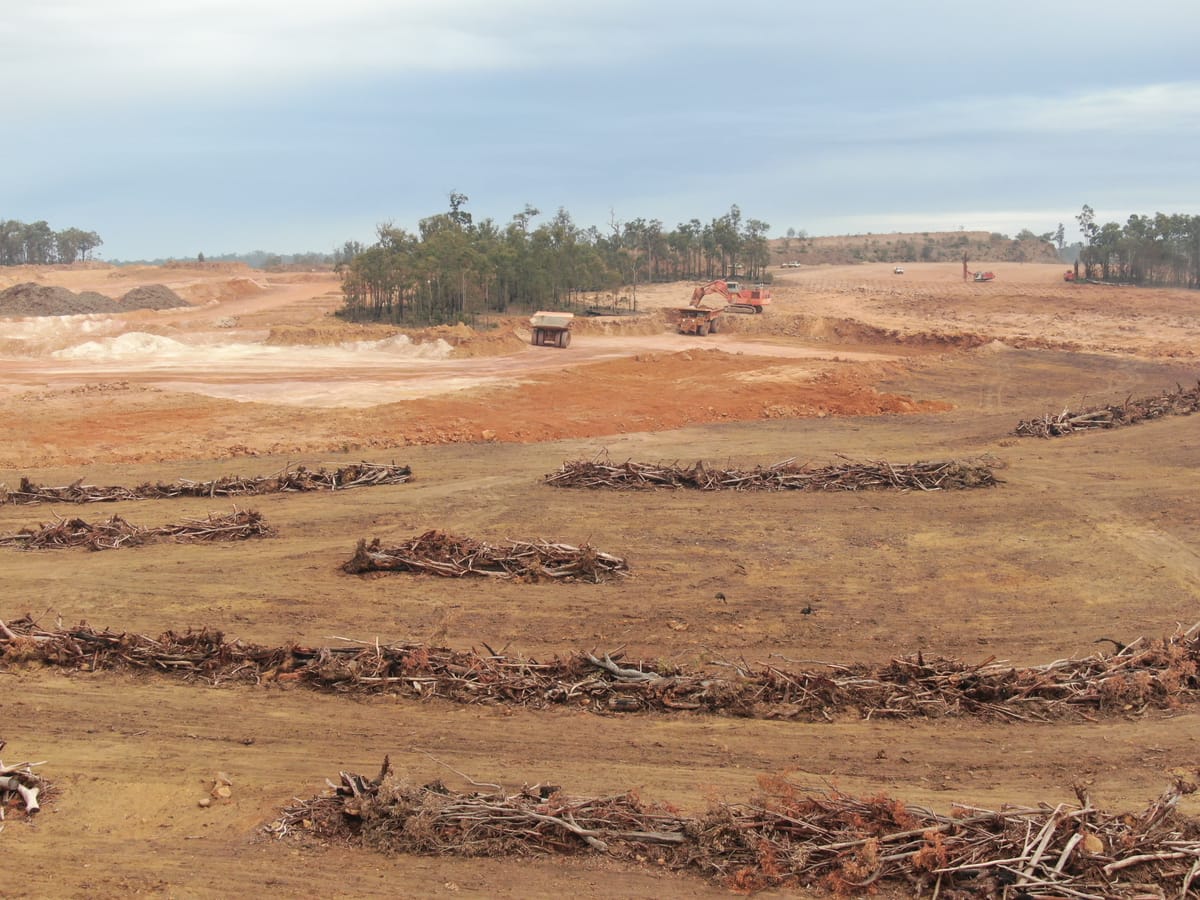Exploration plans spark fear of another Santos oil spill off WA
Plans by Santos, which negligently caused an oil spill off WA four years ago, to drill seven exploration wells off the Pilbara coast have drawn fire from an environmental group.
Extraction of the critical mineral found in the waste from making alumina from bauxite could curb China's 98 per cent share of global production.

Alcoa will soon decide whether to extract gallium from the bauxite it processes in WA after the dominant producer, China, banned exports of the critical mineral.
The move comes three decades after French company Rhone Poulenc closed a gallium plant that used bauxite processing waste from Alcoa's Pinjarra refinery.
This time, the US miner will be an active participant. It has agreed with Japanese trading house Sojitz and the Japan Organisation for Metals and Energy Security to explore the feasibility of a gallium project at either its Pinjarra or Wagerup alumina refineries in WA's south west.
The companies have signed a joint development agreement and are targeting a final investment decision in 2025 to support production starting in 2026.
Gallium is on Australia's critical minerals list, as it is for the European Union, the United States, India, Japan, South Korea and the United Kingdom.
Critical minerals are those essential to modern technology, economies and national security that are vulnerable to supply chain disruption.
Gallium is crucial for high-speed semiconductors and LEDs, and is also used in solar panels and high-performance electronic devices used by the military.
However, it is used in small quantities, with just 700 tonnes consumed in 2023, and demand is expected to reach about 1200 tonnes by 2030.
Gallium only occurs in ores in tiny concentrations, with bauxite typically yielding just 50 parts per million.
China produced an extraordinary 98 per cent of world output in 2023, and has a significant capacity to produce more. In December, it banned exports to the United States, confirming the unreliability of the gallium supply chain.

An Alcoa spokesman said using the old Rhone-Poulenc refinery was not under consideration.
He said another company owns it, and Alcoa's only involvement was to supply it a bauxite-alumina liquor stream from which gallium was extracted.
Norwegian critical minerals consultancy Rovjok recently analysed what went wrong with the first attempt to produce gallium in WA. The $50 million plant - a significant amount at the time - only operated from 1989 to 1991, and again briefly in 1996 and 1997.
Rovjok identified lessons learned from the failed investment
One was the importance of timely environmental approvals. The major problem was not the initial gallium plant, but a plan to also extract rare earths that would have produced radioactive waste.
While Alcoa and its partners are only looking to extract gallium, a final investment decision (FID) in the next five months is a very tight schedule if the companies want to follow the usual cautious practice of having major approval in place before FID.
The commitment would also come before Alcoa has received approval for a massive expansion of its mining in the jarrah forest that is necessary to keep the Pinjara refinery at full production in the long term.
The Alcoa spokesman said approval pathways would be investigated as part of the feasibility study.

The French company's revenue was hit when the spot price for gallium halved the day it reopened the plant in 1996. The dramatic dip was caused by the extra volume a new producer brings to a small market and China ramping up its output.
While Alcoa and its partners have not said what production capacity they are considering, both price-crushing effects could recur.
A lack of processing and testing capability in Australia also drove up the delivered price of the product, according to Rovjok.
Gallium concentrate was shipped to France before the final product went to Japan, and accurate analysis of the product could only be done in Canada. The complexity drove up costs, and the six months from extraction to delivery made it impossible to easily alter production to meet demand.
However, the critical importance of gallium, growing tension between China and Australia's other major trading partners, and the backing of the Japanese government-owned JOGMEC may mean the investment attracts support not tied to commercial returns.
Alcoa of Australia president Elsabe Muller said gallium could deliver additional value from its established operations.
"And further demonstrate how Alcoa's longstanding mineral processing capabilities can be significant in supporting state, national and global objectives in technology and national defence,” she said.
Sojitx said in a statement that it aimed to secure a long-term and stable supply of gallium.
All the info and a bit of comment on WA energy, industry and climate every Friday